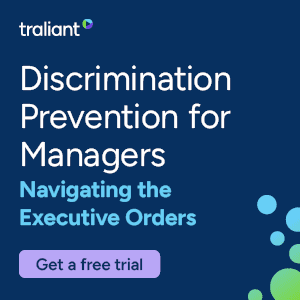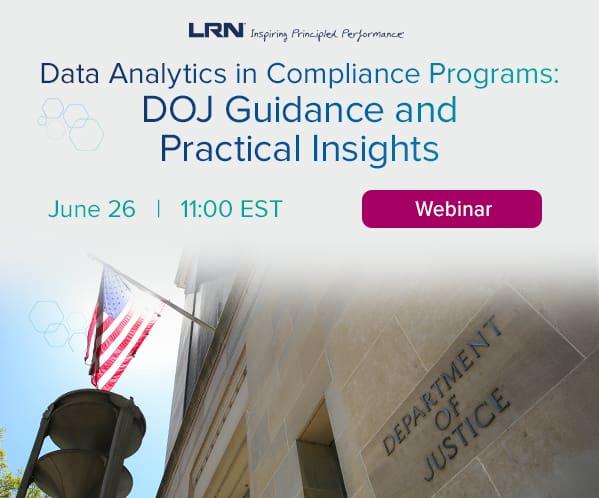The digital revolution is transforming our world. Protiviti’s Jim DeLoach shares how, over the next few years, many organizations will need to undertake radical change programs and – in some cases – completely reinvent themselves to remain relevant and competitive.
Is disruptive innovation sufficiently emphasized on the board agenda and in the C-suite?
Ask executives and directors what their company’s biggest threats are and, chances are, their answer will include the threat of disruptive innovation. As our latest global top risks survey indicates, many leaders are concerned about whether their existing operations and legacy IT infrastructure are able to meet performance expectations related to quality, time to market, cost, innovation and competitors – especially new competitors – that are “born digital,” with a low-cost base for their operations.[1] Additionally, the rapid speed of disruptive innovation and new technologies and resistance to adapting operations in the face of indisputable change rank high on the list of top risks.
At the root of these concerns is digital transformation. It is a main driver of risk impacting uncertainty over business model viability, customer preferences, the competitive landscape, workplace dynamics, the war for talent and even regulatory demands. Clearly, organizations must align their culture, people, processes and intelligence-gathering to embrace this rapidly changing business environment. To thrive in the digital age, organizations need to think and act digital. This requires a different set of capabilities and strengths.
Think about it. Talented people aspire to contribute in a contemporary, dynamic, digitally focused business with its best days ahead of it, rather than to be bound to a slow-moving dinosaur of a company that is not structured to be innovative and dynamic even though it may have a strategy that asserts it will be. Innovative, market-changing organizations are built differently not because they have a “digital strategy,” but because they “think and behave digitally” in setting and executing strategy.
From the perspective of the board, management had better get it right. As many organizations have discovered in recent years, strategic error in the digital economy can be lethal. Hyperscalability of digital business models and lack of entry barriers enable new competitors to emerge and scale very quickly in redefining the customer experience, making it difficult for incumbents to see it coming at all, much less react promptly to preserve customer loyalty and protect market share. The stark reality is that a focus on digital doesn’t always translate into a coherent strategy, as many organizations do not fully understand the potential opportunities and risks and are not demonstrating the necessary sense of urgency.
Key Considerations
The good news is that board and senior executive engagement with technology matters is on the rise.[2] However, our experience indicates that most boards and executives have a way to go to grasp fully the opportunities and risks associated with digital transformation. As we see it, there are four important activities for organizations to consider as they contemplate what digital means to their business and strategy.
1. Assess Digital Readiness
Protiviti’s research and experience with organizations around the world indicates that very few organizations are taking the necessary steps to become truly digital in nature. They may form a digital veneer around their core capabilities, but being truly digital is changing the core – a concept very few organizations have embraced. Protiviti offers a digital readiness assessment structured around 36 capabilities we believe digital leaders excel at. This self-assessment tool for identifying and analyzing gaps across the business is available to organizations free at our Protiviti digital site.[3]
The 36 capabilities are arrayed across six core disciplines many traditional businesses struggle with:
- Vision, mission and strategy
- Management and employee culture
- Organization, structure and processes
- Communication, marketing and sales
- Technology innovation and development
- Big data, analytics and automation
To illustrate the capabilities, we use “vision, mission and strategy” and “management and employee culture” as a context below.
With respect to “vision, mission and strategy:”
Executive management must have a clear understanding of the potential impact of digital disruption in the industry segment(s) in which the organization operates and must be able a clear strategic vision . The entity must have business models and the capacity to .
In addition, digital strategy-setting and review should be a continuous business activity, from which senior executives and the board should expect regular briefings. The team responsible for the organization’s digital strategy should be fed continuously with analyses of the markets and competitor landscape in which the business operates and research formulating scenario plans.
Simply stated, the organization must be capable of challenging conventional thinking and disrupting previously established value chains and ways of working (e.g., management dissects the traditional analog value chain and rethinks the role of all key players rather than just focusing on the current role of the business within the value chain).
Regarding “management and employee culture:”
The executive team must understand the impact the digital revolution could have on the business and must be able and willing to take the necessary steps to ensure the digital transformation program and its various projects are positioned to succeed. To that end, the organization:
- Has a clear roadmap to gain and maintain competitive advantage and achieve digital leadership in the market;
- Has the ability to make use of the company’s digital assets – whether brand, human resources or technology – and deploy digital solutions;
- Cultivates a strong corporate culture from the top down that promotes an open and participative management environment – characterized by trust, mutual appreciation and respect – and motivates and rewards staff to be creative and highly innovative;
- Understands and is able to attract the type of employees needed to be competitive in the digital era; and
- Has a workforce made up of highly talented people from diverse backgrounds and with a good understanding of technology and digital business models.
The board and the executive team must also exhibit the above qualities and undertake an active digital leadership role.
In summary, leaders must think about how they can embrace the opportunities emerging technologies present. The digital age is forcing balance outside-the-box thinking with the practical considerations of repositioning the business.
The above and other competencies can be useful when benchmarking organizations against the industry and relevant case studies and plotting the path toward digital maturity. The point is that the strategy should reflect the competencies that currently define the organization and address those competencies that, by their absence, present barriers to success. Many strategies ignore these fundamental issues, resulting in a business that is digital on the edges but not at the core. Our view is that a truly digital business has a digital core. To that end, digital readiness is the focus of a current state assessment.
2. Define and Continuously Refine the Digital Vision and Strategy
Once the organization’s digital readiness and capabilities have been assessed, management is positioned to think strategically. A member of the executive team must own responsibility for understanding the competitive landscape, the opportunities emerging technologies present and the threats to existing revenue streams.
Organizations need to make a conscious decision about whether they are going to be the disrupter and try to lead as a transformer of the industry or, alternatively, play a waiting game, monitor the competitive landscape and react only when necessary to defend market share. For many companies, the answer may be somewhere between the two. For those organizations choosing not to actively disrupt the status quo, their challenge is to be agile enough to react quickly as an early mover. Not enough are.
A relevant analogy is that no one should attempt to climb a challenging mountain too quickly. Fitness, preparedness, teamwork and knowledge of expected weather conditions are critical to success. It is a fool’s errand to attempt a climb before one is ready.
In the same way, management must frame the digital vision, and the strategic initiatives supporting it, around what the enterprise is good at – its core competencies. The vision must express a clear view as to the direction relevant digital technology is trending and how it can elevate what the organization does best – its differentiating core competencies that deliver unique customer experiences. This is a never-ending discipline of continuously redefining vision, strategy and capabilities. This is much more than developing a plan; with technology and regulations changing and innovation happening so rapidly, the business needs to review and refine its digital priorities constantly.
To illustrate, Agile is not just another software-development approach, but also a way of thinking around applying adaptive planning, evolutionary development, early delivery, continuous improvement and rapid and flexible response to change that can and should be applied to all business processes, including strategy-setting. Similarly, a digital business needs a responsible executive and team who are focused on disruption of the business model (what we refer to as “disruption focus”).
In the digital age, an organization is more likely to be successful if it is capable of challenging conventional thinking, places “driving value for the customer” at the heart of its decision-making, has a deep understanding of maturing technologies, and is able to apply that knowledge to drive innovation that creates new types of value for existing customers and opens up new markets. As they say, it’s “disrupt or be disrupted.”
3. Define the Target Operating Model
With the current-state assessment against projected needs as a baseline and a compelling vision and strategy articulated, management should define the processes, organization, methodologies and systems comprising the future-state operating model – including the talent needed to make the model happen – that remains true to the company’s identity and brand promise. Additionally, in the rush to become digital, the importance of policies shouldn’t be forgotten. Areas such as robotic process automation, machine learning, natural language processing and artificial intelligence (AI) present all sorts of opportunities but bring with them significant risks as well as ethical questions for leaders to consider.
Too often, policies, processes and organizational structures get in the way of becoming and remaining digital. The key is to empower, trust and monitor people, not control them – a different way of thinking for many organizations rooted in “command and control” structures. If the business is clear about where it’s going through its vision and strategy, management must recruit the right people, train them in the right way and ensure that the enterprise’s policies, processes and systems are suitable to compete effectively in a digital world. This often requires a hybrid model of combining talent with digital expertise and institutional knowledge.
With the current and future states defined, improvement plans should be developed to close the gaps based on industry best practices and reviewed with executive management and the board. The risks associated with the target state should be identified and assessed against the entity’s risk appetite. In this respect, management should be careful to avoid understating the hyperscalable business model component of digital transformation.
Digital thinking requires organizations to solve the problem of rapid growth and scalability without dependence on people. Thus, high levels of automation are critical in digital business models. Not only do these capabilities drive efficiencies, they also enable the business to scale rapidly to meet spikes in demand. With a digital business model, management no longer needs to scale ahead of demand.
4. Align the Organization with the Needed Change
Using digital technologies to improve products, services and processes requires focus and discipline. To enable continuous or breakthrough change with confidence, buy-in must be obtained from executive management (and the board of directors for significant changes in strategy, processes and systems). In addition to executive management engagement, support is needed from other key stakeholders such as line-of-business leaders, operating personnel and process owners most affected by the change. The communication of organizational change and its implications must address why a digitally focused culture is necessary for the entity to survive and thrive and offer a compelling case that the collective interests of employees and the enterprise in effecting the necessary change are inextricably linked.
Depending on a director’s or an executive’s perspective, the exciting – or worrisome – truth is that the digital revolution is only just getting started, and the pace of change is accelerating rapidly. For most large companies today, it’s not a question of if digital will upend their business but when. Even when executives are aware of emerging technologies that obviously have disruptive potential, it is often difficult to have the vision or foresight to anticipate the nature and extent of change.
That is why every organization must chart its own digital journey. To that end, executive management and the board should be engaged in all of the above activities, from readiness assessment to organizational alignment. In addressing digital, directors need to recognize the signs of organizational short-termism and executive management’s emotional investment in traditional business models that can frustrate the needed commitment and tone at the top in driving disruptive change. Ultimately, the board must ask the necessary questions to encourage management to advance the enterprise’s digital journey at a pace that will sustain the company’s market position and sources of competitive advantage.
Questions for Senior Executives and Boards of Directors
The following are some suggested questions that senior executives and their boards may consider, based on the risks inherent in the entity’s operations:
- Does the executive team and board have access to the expertise and experience needed to understand how digital disruption can affect the organization and provide effective oversight over how the organization is incorporating digital thinking into the strategy-setting process?
- Has management assessed the organization’s digital readiness and identified the strengths and weaknesses across the business in the context of the digital vision, mission and strategy?
- Does the company have a digital transformation program in place that is well-defined and positioned to succeed? Are adequate resources allocated to support the program’s execution? Is there a compelling customer-centric vision and an accompanying strategy driving it?
- Is there sufficient support for decision-making within the organization on whether or how to embrace new or emerging technologies? For example, are digital concepts (e.g., speech recognition, natural language processing, AI, robotics, machine learning and visualization techniques) being used to reimagine key operating processes and such functions as finance, information technology, procurement, risk management and internal audit?
- Are there barriers to innovation and digital transformation that exist within the organization that require the board’s and executive management’s attention from a change-management standpoint? Are steps being taken to eliminate these barriers?
[1] See Top Risks for 2017: Executive Perspectives on Top Risks for 2019, Protiviti, www.protiviti.com/toprisks.
[2] See Managing the Crown Jewels and Other Critical Data, Protiviti, www.protiviti.com/US-en/insights/it-security-survey.
[3] See Introducing Protiviti’s Digital Assessment: Are You Ready for Disruptive Innovation?, Protiviti, www.protiviti.com/digital.



 Jim DeLoach, a founding
Jim DeLoach, a founding 








